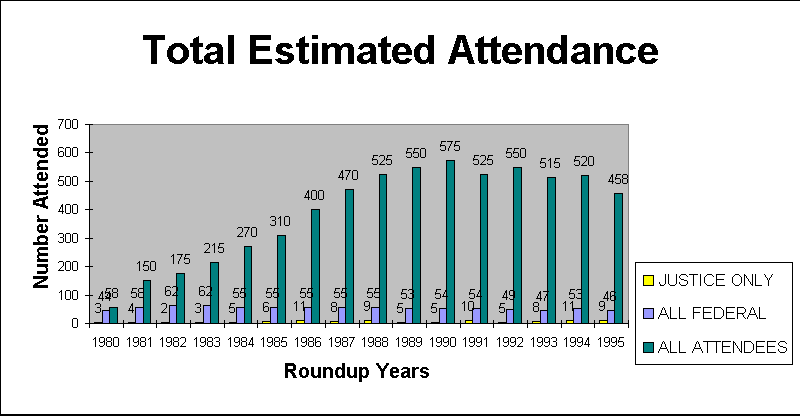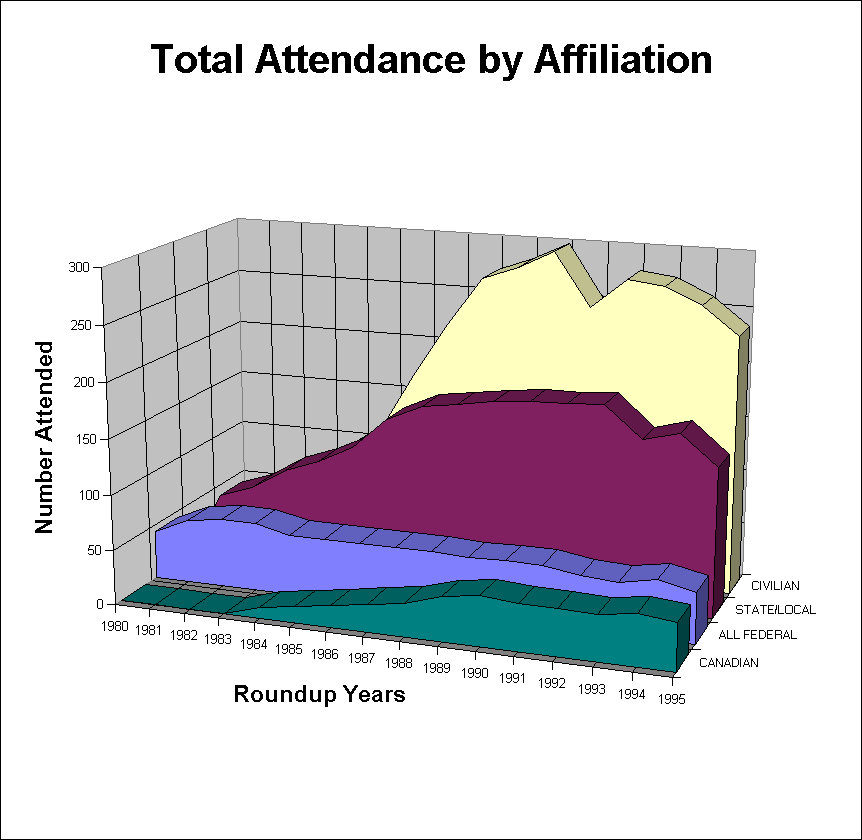
Total attendance at the Roundup grew rapidly from the first
year. We estimate that the number of attendees more than doubled
in 1981, tripled by 1982, and almost certainly topped 500 persons
by 1988. [ / Our attendance estimates from 1981 through 1987 are
based on estimates by Rightmyer and other attendees, figures
reported in various invitations, and identification of actual
attendees. Thus, while we estimate that over 150 people attended
the 1981 Roundup, we have only been able to identify 43 by name.
From 1988 to 1994 our estimates were substantially aided not only
by the fact that people's recollections were significantly better
because the events were more recent but also because we obtained
copies of the registration checks deposited into Rightmyer's
account identifying those who registered and paid by check. For
1995, we obtained the actual sign-in sheets so the figures for
that year are the most accurate of all. For a detailed discussion
of the estimating methodology, see the appendix to this report,
Section A, at 11. ] Attendance by DOJ personnel [/ We included as
DOJ personnel those who either were employed by DOJ at the time
of attendance or who currently are employed by DOJ. ] remained
rather small, however, beginning with three people with DOJ
affiliations attending in 1980. On two occasions, 1986 and 1994,
DOJ attendance reached as high as eleven attendees. On average,
the number of DOJ employees in attendance was six. In every year,
it was a very low percentage of all Roundup attendees.

Figure 1

Figure 2
With these rapid increases in attendance levels, however, the character of the Roundup underwent a significant transformation. Not only did the rapid growth in size make the Roundup more impersonal, it also led to a change in the composition of attendees. Whereas approximately 75 percent of the attendees in the first year were employed in federal law enforcement, the trend away from such sizable federal law enforcement representation began as early as the second year of the Roundup when invitations were extended to state and local law enforcement personnel. These individuals in turn invited friends who were not in law enforcement. The numbers of state and local officers and non-law enforcement in attendance rose very quickly. This process tended to feed on itself, accelerating the transformation so that by 1990 less than 10 percent of attendees were employed by federal law enforcement agencies and half of the attendees did not work in law enforcement at all. [ / Of the attendees who paid the full registration fee, the so-called "Good O' Boys," the percentage of federal agents -- including retired -- was somewhat higher, approximately 12 percent. Local law enforcement officers and local guests did not pay the full fee to attend. ] Indeed, contrary to general perceptions generated by early media accounts of the Roundup, the Roundup has not been primarily a federal law enforcement function since the early 1980s. [ / This fact means that the inferences apparently drawn by Hayward, Randall, and others -- that most of the key players at various Roundups or that perpetrators of particular acts were either ATF agents specifically or federal law enforcement agents generally -- are unwarranted. ]